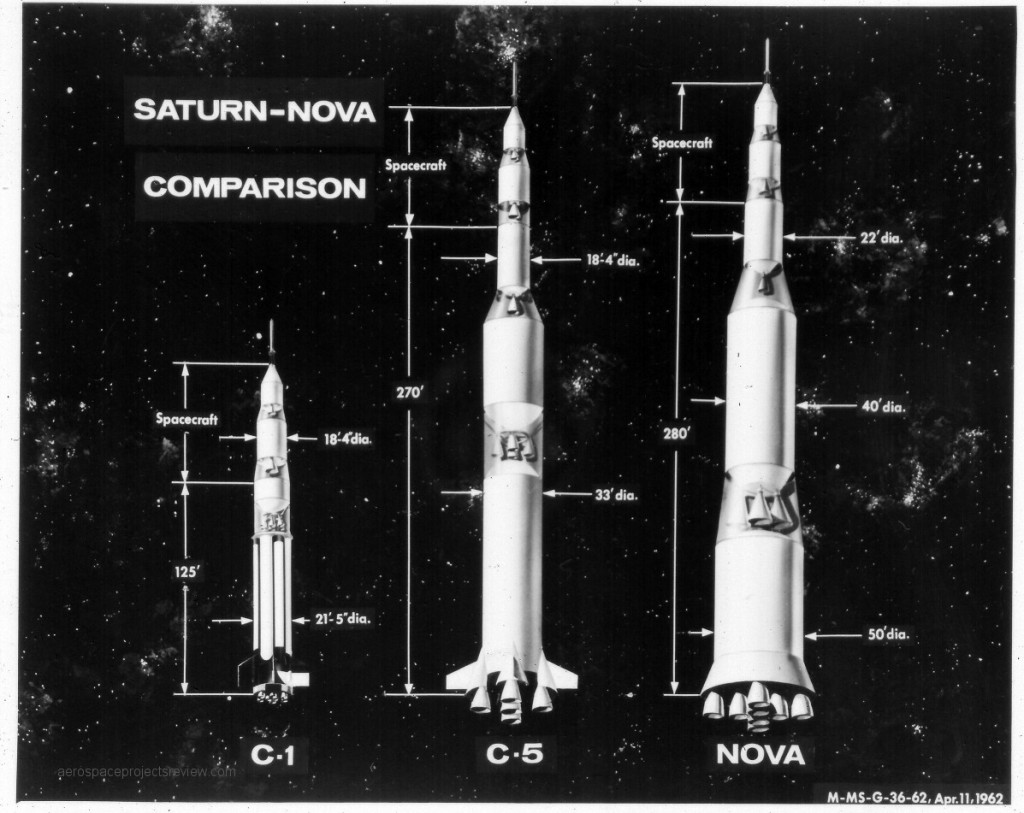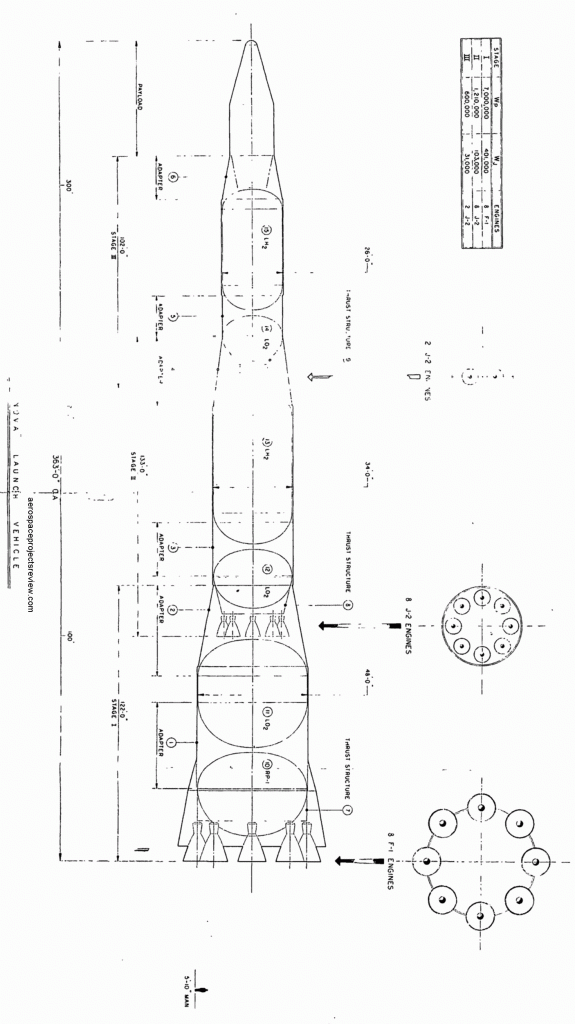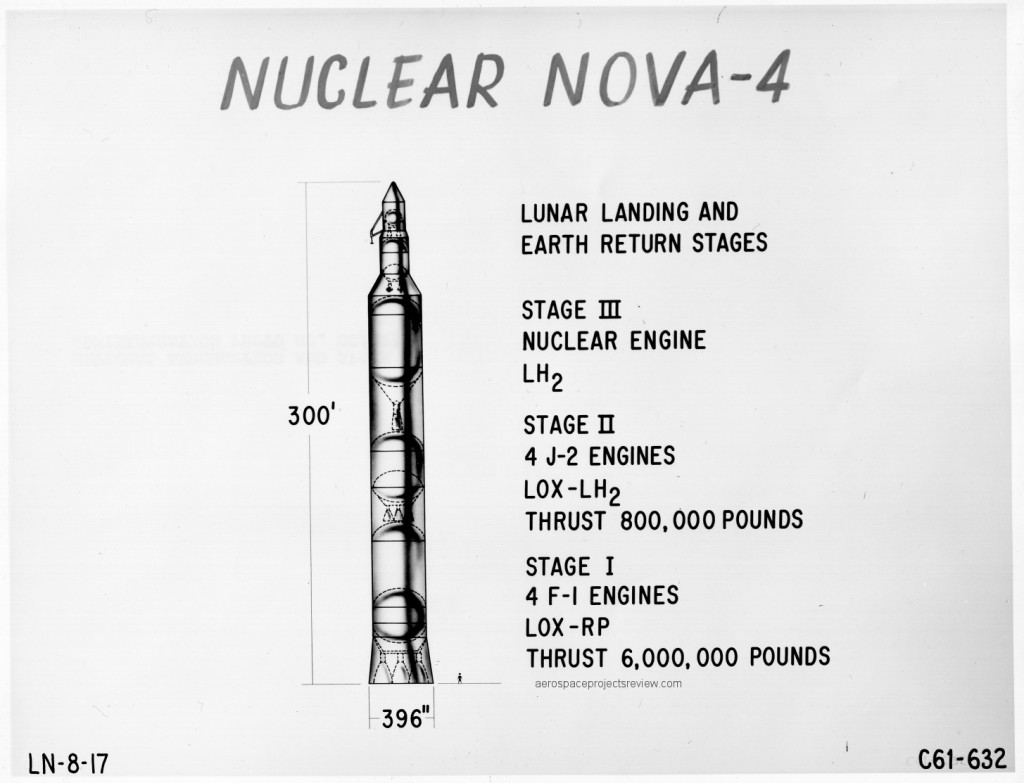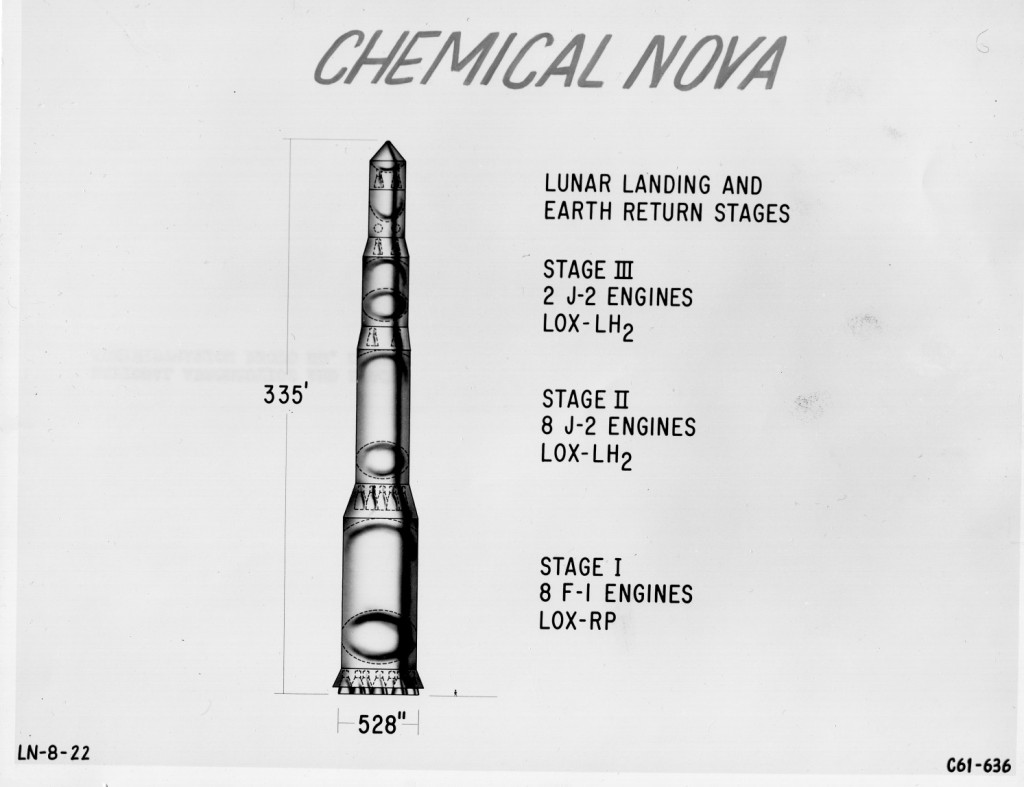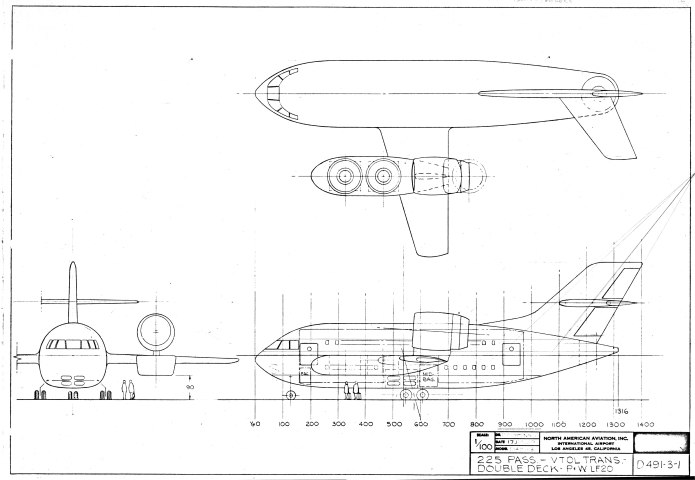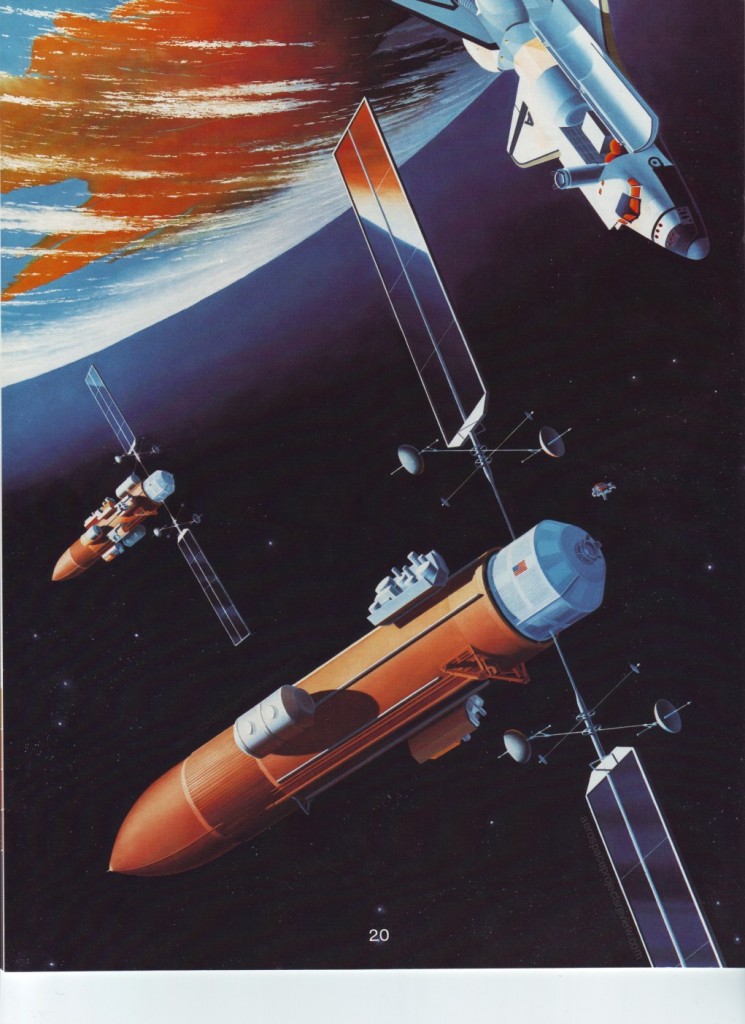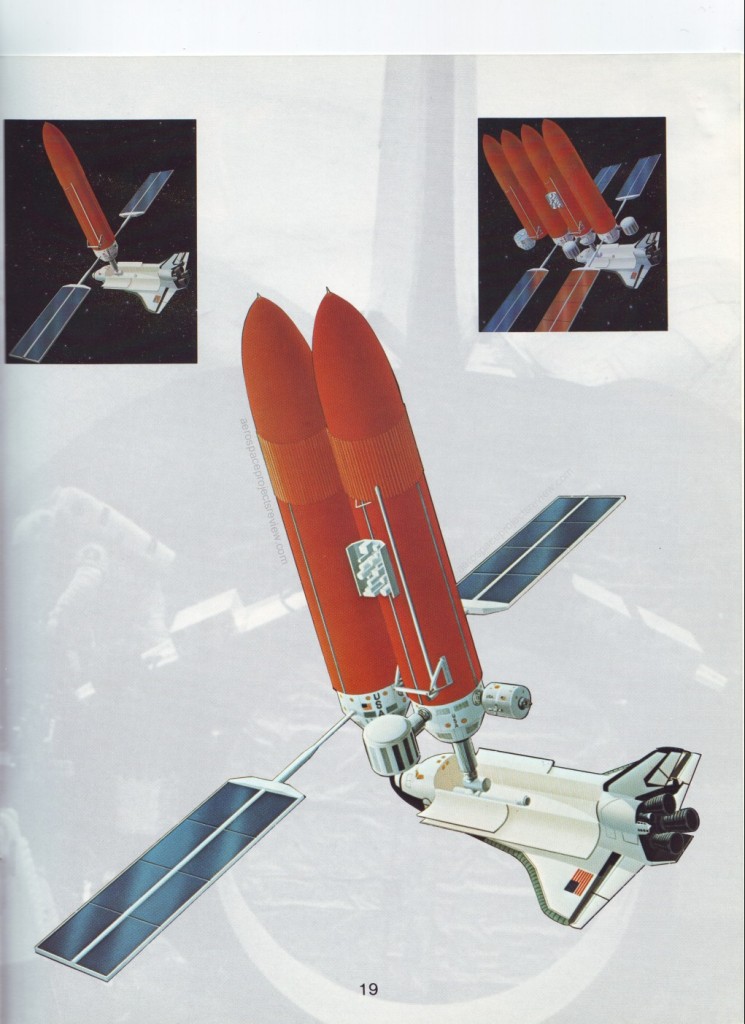A 1962 NASA graphic showing the Saturn I, Saturn V and one or the more stereotypical of the Nova configurations to scale. Note that they all show direct-landing Apollo spacecraft… an extra stage, and no LEM. The Nova is similar to the “Saturn C-8” configuration. Note that the second stage of the Nova is larger in diameter and almost as long as the first stage of the Saturn C-5, and would have made the basis of a fairly substantial launch vehicle on it’s own.
A NASA-Marshall concept for a Nova launch vehicle. Nova began life as a vehicle somewhat smaller and lower-capability than the Saturn V, and quickly grew substantially larger than the Saturn V, ending its run as the “Post Saturn” launch vehicle (with designs such as ROMBUS and Nexus). This design features eight F-1 engines on the first stage, and has been, probably apocryphally, referred to as the “Saturn C-8.”
In the mid 1960s, supersonic transports were just around the corner. And the trends in aviation development showed the aircraft designers and air travel planners that hypersonic transports were less than two decades away. Consequently, all the major aircraft designers in the US devoted effort to designing passenger transports that could carry paying customers at Mach 5 or greater. But a combination of politics (the OPEC oil embargo as well as a wider economic downturn, as well as largely trumped-up ecological concerns) and technological issues managed to assure that SSTs were never developed beyond the Concord stunt. And if a jetliner couldn’t get to Mach 1, it surely couldn’t get to Mach 5.
But in 1966, these issues were not yet seen, so Convair was busy designing a whole range of hypersonic transports. They might have missed out on the first generation of SSTs, but they were not going to miss out on the HSTs.
A piece of NASA presentation artwork from 1961 showing a basic design for an all-chemical-rocket design for a Nova launch vehicle. This would have been somewhat more powerful than the as-yet undesigned Saturn V; and it would have needed to be in order to carry of its mission. The Lunar Orbit Rendezvous design had not yet been chosen, and consequently the Apollo capsule and the service module both would have been landed directly on the lunar surface.
Another brochure illustration showing the ACC in use supporting the development of external tank based space stations. This time, SpaceLab components are shown attached to the outside of ET space stations. This would have meant that the ETs would have had to have had fittings welded onto them, either on the ground before launch or while in orbit, or otherwise holes drilled or punched into them on orbit for bolts or some other mechanical fasteners. Poking holes in the tanks would of course ruin them as pressure vessels; in this case they’d be good only as structural attachments.
Another issue would be the insulating foam. Over time, environmental conditions (extremes of hold and cold over 90-minutes orbits) would cause the foam to degrade and flake off, surrounding the station with a comet-tail of debris.
More on the ACC – the complete 22-page brochure – is available HERE.
The Martin Marietta Aft Cargo Carrier would have allowed the Space Shuttle to transport payloads of larger diameter by carrying them on the aft end of the External Tank, rather than in the Orbiters cargo bay. This would of course have necessitated that the ET be carried all the way to orbit; consequently, the ET would be on-hand and available for use.The illustration below shows how a fairly small number of Shuttle launches could have resulted in a truly vast space station.
More on the ACC – the complete 22-page brochure – is available HERE.
